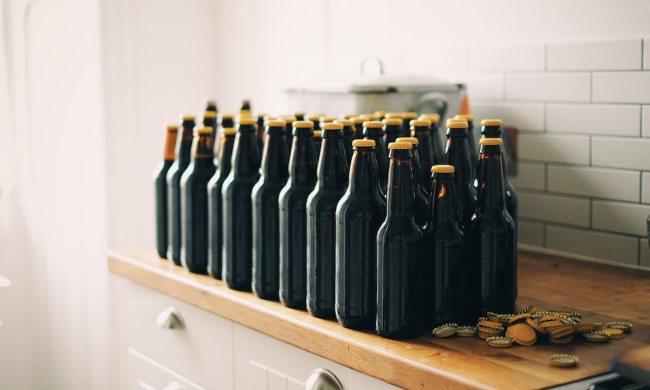Anyone who has thoroughly browsed the liquor store has probably seen bottles with the word “solera” splashed across the label. If you’re familiar with sherry-making techniques, then you likely know this term, though its use extends well beyond fortified wine. If the solera aging system is a foreign concept to you, it’s quite easy to understand, especially if you paint a picture of the process in your head.
What Is the Solera System?
The solera system was first conceived in Spain, and it’s still used for spirits like fortified wine and rum, especially in former Spanish colonies like Guatemala and Venezuela. A solera system involves rows of barrels that are stacked on top of each other. The bottom-most row of casks, which is called the solera, contains liquid that has been aging the longest. When it comes time to bottle some of that liquid, it is taken from this bottom row of barrels — let’s say about a third of the liquid is removed from each one.

Then, liquid from the barrels directly above, which are called “first criaderas” and contain the second-oldest liquid, is used to replace what was taken from the solera. Finally, new liquid from the topmost row of barrels (aka the “second criaderas”) replaces what was taken from the second row, and the top barrels are then refilled with unaged spirit. The the whole system is left to develop, and the process repeats over and over again.
Why Is the Solera System Used?
There are two main reasons why spirits companies employ solera aging. First, it increases the average age statement of an expression across the board. Second, the liquid that is taken from the solera is incredibly consistent because differences in the rum, wine, or whatever else is in the casks average out over time.
We think one of the best ways to get familiar with the solera system is to try some spirits that are aged using the technique. These bottlings are some of our favorites and a good place to start exploring.
5 Solera Spirits to Try
Zacapa 23

Zacapa 23 contains a blend of rums that have been aged between six and 23 years. It’s a gorgeous and extremely drinkable rum with rich flavors of honey, butterscotch, and dried fruit. We love sipping this fine Guatemalan spirit neat or stirred into a Rum Old Fashioned.
Bertoux Brandy

This new California brandy was designed to be mixed in cocktails. Bertoux is a blend of pot-distilled brandies that range in age from three to seven years. It spent time in both French and American oak that lent a smooth flavor that’s extra satisfying in a classic Sidecar.
Bodegas Grant Oloroso La Garrocha Sherry

If you’re looking for a highly drinkable sherry to pair with cheese or serve after a big meal, this is a beautiful bottle to try. La Garrocha is made from Palomino grapes in Spain’s Jerez region and aged for nine years in Bodegas Grant’s esteemed solera. Nutty and dry with notes of balsamic vinegar and maple, this is a great bottling to buy, whether you’re a sherry novice or expert.
Glenfiddich 15 Year Old

Coming in at around $58 a bottle, Glenfiddich 15 Year Old Scotch is a great value for its age. The liquid is drawn from a solera vat that Glenfiddich has kept at least half full since 1998. It’s triple-rested in new toasted American oak, used bourbon barrels, and sherry butts to give it a spiced, smooth taste that’s bursting with notes of marzipan, cinnamon, and ginger.
Hillrock Solera Aged Bourbon Whiskey

This heavily awarded bourbon is the first American whiskey to be aged via the solera method. After aging the liquid in new American oak, Hillrock finishes the bourbon in 20-year-old oloroso sherry casks that give it layered notes of fig, roasted walnuts, and candied fruit. Sip this beautiful expression neat to celebrate special occasions.



